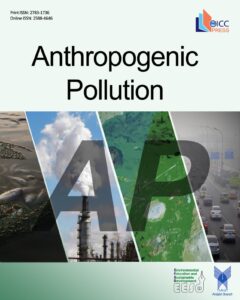Multiple Linear Regression Model for Prediction of Pupils Exposure to PM2.5
Authors
- Yasser Baharfar 1
-
Mahmoud Mohammadyan
*
 2
2
- Faramarz Moattar 1
- Parvin Nassiri 1
- Mohammad Hasan Behzadi 3
Abstract
Particulate matter, as one of the biggest problems of air pollution in metropolises, is the cause of many respiratory, lung and cardiovascular diseases, which timely awareness and announcement can reduce these adverse effects on human health. Therefore, considering that children are more exposed and more sensitive to this pollution, this research was conducted to introduce an evaluated mathematical model to predict PM2.5 concentration levels, indoor selected preschools located in one of centeral district of Tehran (district 6), using determination of related factors to PM2.5 concentration. Classroom environmental information, Meteorological information and urban fixed monitoring stations data were collected through measuring Indoor and outdoor classroom PM2.5 concentrations using direct-reading instruments, adjusted questionnaire and conducted organizations, simultaneously. Results showed the spring and autumn had the lowest and highest indoor and outdoor concentrations (17.1 and 20.5 μg m-3 & 48.7 and 78 μg m-3respectively). Multiple linear regression model was introduced by statistical analysis and the results of indoor PM2.5 concentration predictions were compared and evaluated with measured data. The results of introduced this model, consisting of identifying seven main factors affecting the mean concentrations of indoor PM2.5, including outdoor PM2.5, the number of pupils, ambient temperature, wind speed, wind direction and open area of the doors and windows, showed that it has good accuracy (R2 = 0.705) and significantly correlated(p < 0.001). The Multiple Linear Regression Model can be used with good accuracy to predict indoor PM2.5 concentration of preschool classes in Tehran.



